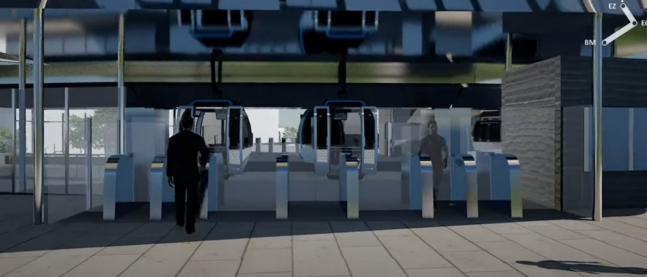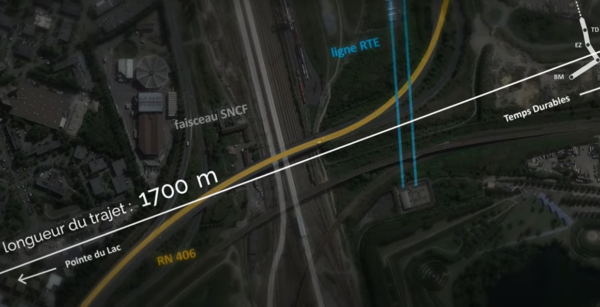
Cities, SI Urban 2/2021
Paris – Doppelmayr builds a new ropeway
More and more cities are considering how to cope with increasing volumes of traffic. In Paris, a decision has now been made to use the largely unexploited third level. With an urban ropeway from world market leader DOPPELMAYR, a decision has been made in favour of sustainable public transport.
The order came from Île-de-France Mobilités , the local transport authority for Île-de-France in the greater Paris area. With its new concept, the Austrian manufacturer successfully beat off the competition and a DOPPELMAYR ropeway will therefore float over Paris from 2025.
For many Europeans, the image of an urban ropeway is still unusual, although the efficienttransportsystemhaslong beenapartoffamiliarcityscapesin Asia and Latin America.
Both Vietnam and Japan use urban ropeways as an environmentally friendly and convenient alternative to local public transport. With Câble A, Paris is now following in their footsteps.
In urban areas in particular, many people do not have a car, which makes the demands on public transport provision even greater. The new DOPPELMAYR ropeway will help to meet the mobility needs of residents in the future.
Câble A will be the first urban ropeway in Paris. From 2025, the planned route will offer a connection from Créteil to Villeneuve-Saint-Georges, via Limeil-Brévannes and Valenton. Screenshots: Découvrez le Câble A

Commuters get a lift
The route of the Câble A cable car will lie to the southeast of the city centre andnorthwestofParisOrlyAirport. Therearearound20,000peopleliving in the planned catchment area of the line.
Furthermore, an estimated 6,000 workplaces are located around the ropeway. Consequently, a system with a high transport capacity is needed in this region. The planned cable car will carry 1,600 passengers per hour and direction.
From 2025, the journey along this route will take 17 minutes, even during peak times. Another advantage of the system is the continuous flow, which means that waiting times when boarding and alighting can be kept short.
Launch
When a new transport system is introduced into city traffic, one of the most important factors is complete integration of the new local public transport into the existing network. That is also precisely the plan for the DOPPELMAYR ropeway in Paris.
By bringing the transport systems together in a shared provision that includes tram, bus and metro, they will be significantly easier for passengers to use.
Because of their fast and above all economical design in comparison with other transport systems, such as trams or underground railways, ropeways are ideally suited to covering the last mile. Combining them with other systems or integrating them into the transport system therefore makes sense for ropeways.
The commitment of DOPPELMAYR to the transport solutions of the future is paying off. It is not only in Paris that a cable car is planned; this sustainable transport system will also be used in Almere for the garden show. The total value of the project is expected to run to around 110 million euros.
ROPEWAY CÂBLE A
ROPEWAY CÂBLE A
|
Length |
4,5 km |
|
Track length |
1.700 m |
|
Journey time |
Approx. 17 minutes |
|
Stations |
5 |
|
Capacity |
10 P |
|
Transport capacity |
1.600 P/h |
|
Project costs |
ca. 110 Mio. € |







